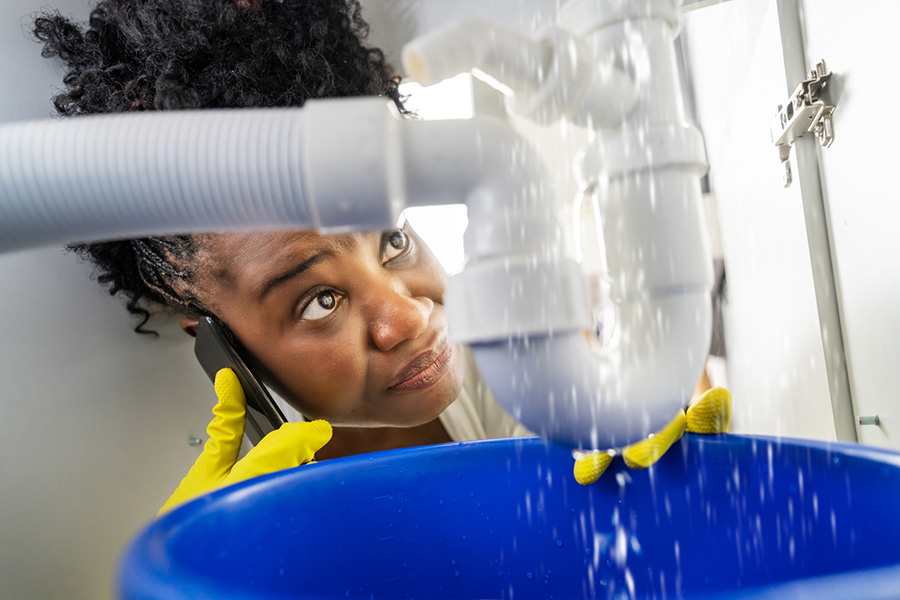Serving Nashville and the Middle Tennessee Area

The Maynard Man Shares: How to Spot a Plumbing Leak
Not every leak shows up with dripping water or a flooded floor. Some start small—hiding inside walls, behind cabinets, or underneath floors—quietly wasting water and damaging your home over time. That’s why catching them early is key. The Maynard Man has seen it all, and he knows the early warning signs that many homeowners miss. In this blog, he’ll walk you through how to recognize hidden leaks, where to check, and what you can do before it becomes a costly repair. With a little know-how, you can stay ahead of trouble and keep your plumbing—and your home—running smoothly.
Unexpected Signs of a Plumbing Leak
Some leaks are obvious—but many stay hidden until they’ve already caused damage. The Maynard Man encourages homeowners to pay attention to the more subtle signals that something might be wrong.
A Musty or Damp Smell Indoors
If you notice an earthy or musty odor that doesn’t go away with cleaning, it could be moisture trapped behind walls or under flooring. Leaks that go undetected often lead to slow mold growth in dark, enclosed spaces.
Water Bill Increases Without Explanation
A higher water bill isn’t always due to seasonal changes or extra laundry. If your usage seems steady but your costs climb, a hidden leak may be wasting water around the clock.
Stained or Warped Flooring or Walls
Brownish spots on the ceiling, bubbling paint, soft drywall, or warped baseboards are often a sign of moisture intrusion. These changes typically mean the leak has been happening for some time and needs immediate attention.
Check These Common Leak Zones
While some leaks pop up in obvious places, others stay hidden in less frequently checked corners of your home. The Maynard Man recommends making these areas part of your regular home maintenance routine to catch issues early.
Under Sinks and Around Appliances
Open the cabinets beneath kitchen and bathroom sinks and inspect the plumbing for damp spots, rust, or discoloration. Dishwashers and washing machines can also develop slow leaks at the hose connections or around the base—especially if the seals are aging or loose.
Basement Pipes and Ceiling Corners
Leaks from upper-floor bathrooms or utility areas often show up in the basement. Keep an eye out for wet spots on exposed pipes, dripping from the ceiling, or unusual stains on the walls. These are signs water is making its way through unseen cracks.
Outdoor Faucets and Hose Connections
A leaking spigot might not make noise or mess inside—but over time, it can damage your foundation or erode the ground near your home. If you see wet patches that linger near exterior faucets, or if the ground feels softer than usual, a leak could be the culprit.
DIY Leak Testing You Can Try
If you suspect a leak but aren’t sure where it’s coming from, there are a few simple, safe tests you can perform before calling in the pros. The Maynard Man recommends these homeowner-friendly techniques to help confirm your suspicions.
The Water Meter Test
Turn off all faucets, appliances, and water-using devices in your home. Then, check your water meter and note the reading. Wait 30 minutes to an hour—without using any water—and check it again. If the numbers have changed, there’s likely a hidden leak somewhere in your plumbing system.
Food Coloring in the Toilet Tank
Toilets are one of the most common sources of silent leaks. Add a few drops of food coloring to the tank and wait 15–20 minutes without flushing. If colored water appears in the bowl, you’ve got a leak—usually from a worn flapper or faulty valve.
Moisture-Sensitive Tape or Leak Detectors
Place leak detection tape or battery-powered sensors under sinks, behind appliances, or near water heaters. These inexpensive tools can alert you the moment moisture is present—giving you a head start on fixing the issue before damage sets in.
When to Call The Maynard Man
Some leaks are easy to confirm and fix—but others stay hidden until the damage is already underway. If you’ve spotted structural issues like sagging ceilings, peeling paint, or moldy odors that won’t go away, it’s time to bring in a professional. The Maynard Man and his team use advanced diagnostic tools like thermal imaging, acoustic sensors, and moisture meters to locate leaks without cutting into walls or tearing up floors.
Professional leak detection isn’t just about finding the water—it’s about solving the problem at the source. Whether it’s a pipe joint behind drywall or a slow drip under your foundation, The Maynard Man can pinpoint the cause and recommend the right fix. The sooner you call, the better chance you have of avoiding costly water damage, structural issues, or rising utility bills.
Wrap-Up: Find Leaks Before They Find You
Plumbing leaks don’t always make a splash—but even the smallest drip can turn into a major problem if left unchecked. By learning what to look for, inspecting key areas, and trying a few simple tests, you can catch leaks early and avoid damage to your home. And when signs point to a hidden issue, The Maynard Man is ready with expert tools and fast solutions. Contact Maynard Plumbing, Heating, Cooling to schedule leak detection or plumbing repairs, and protect your home from unexpected water damage—before it ever begins.
Recent News
How to Protect Your Pipes from Freezing During Cold Weather in Nashville
5 Signs Your Water Heater Needs Repair Before Winter Arrives in Nashville
How Regular Drain Cleaning Can Prevent Costly Plumbing Emergencies
High-ROI Home Improvements in Nashville
Energy Efficiency & Indoor Air Quality Blueprint for Tennessee Homes
Home Heating and Cooling Options: Ductless, Mini Split, and Heat Pump Explained
The Ultimate Nashville Home Maintenance Calendar
Schedule Service


